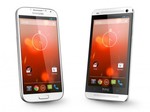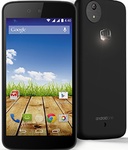AAWireless early access review - Android
I’ve been a huge fan of Android Auto. Having my phone be the main hub of my car infotainment system has been a great upgrade over the stock experience of my Nissan Juke. I have all the things I need. Phone, Maps, Music, and Messages project right from my phone but on my dash for easy access while driving.
Honestly, there’s just one minor downside… I have to plug it in every time. Now, this has its pros and cons, but on daily use wireless would be a great option. Unfortunately, Android Auto head units with wireless are expensive and limited at the moment. Thankfully, an Indiegogo crowdsourced project called AAWireless has come to the rescue.
I got early access to one of the new retail prototypes and it’s been an amazing addition to my car. AAWireless is easy to set up and leverages off-the-shelf parts to mimic the wireless modules in newer Android Auto devices.
Setup
So here’s how to set up AAWireless. First, you plug in the dongle where you would normally plug in your phone for Android Auto. This gives the car unit the signal that you are trying to use Android Auto. The dongle will power up and blink blue and green to let you know it’s ready.
Next, head to your phone’s Bluetooth settings and search for the AAWireless device. Connect and pair in the prompts. Once complete, you should see a normal Android Auto setup wizard, and then you have wireless Android Auto like newer units.
What’s it doing?
AAWireless uses your phone to connect over Bluetooth and an internal WiFi module to send the Android Auto projection with no physical wires to your phone. It’s a “simple” workaround to get wireless much like Qi-charging. Yes, something is still plugged in to get the functionality but just not your phone.

It works well
AAWireless works surprisingly well — especially for pre-release hardware. Once I had the unit set up I really only had one issue. For the first few days, it would only connect the first time I initiated a connection without manually going into Android’s Bluetooth settings every time.
I finally figured out the existing Bluetooth pairing to my car’s default sync system was interfering. Once I forgot that connection in Android settings the AAWireless dongle has worked flawlessly.
I get in the car, start it up, and everything just works with Android Auto working wirelessly. The dongle does take about 20 seconds to boot up and initiate but honestly, it takes me that long to get situated and back out of my garage anyways.
Otherwise, I’ve had zero issues. Connections have been smooth and consistent. And I like that I still have the option of wired on longer trips if needed for topping off my phone’s battery life. With the AAWireless using the exact same USB-C cable, I simply unplug from it and plug it into my phone.
There’s also a companion app that can be used to offer OTA updates to the dongle, tweak settings if needed, and help novice users through the setup process. It allows for DPI, USB modes, and report issues. The default settings work great for me but nice to see this available.

Worth it
I backed this project at $65 and the team hasn’t released full retail pricing yet, but to me, it’s well worth the cost. This added functionality makes the Android Auto experience just a little more convenient and seamless for me.
It’s a no-brainer for those of us with existing Android Auto car units without the option for wireless connections. For me, the latest Pioneer is over $500 when my previous generation works fine otherwise. Adding wireless to it is great at $65 but not worth the extra $400 in cash.
Head over to the AAWireless Indiegogo page to follow the development. There are some reports of EU backers getting their official retail models recently.
18/03/2021 09:00 PM
FBI report reveals cybercrime victims lost $4.2 billion in 2020
18/03/2021 01:20 PM
Google's plan to block third-party cookies has drawn attention from the DoJ
18/03/2021 04:24 PM
Twitter is 'reviewing' its rules for world leaders
18/03/2021 10:36 PM
Android 12 Developer Preview 2 rolled out for Pixel devices
18/03/2021 05:15 PM
Google’s Pixel 6 could sport an in-display fingerprint scanner
18/03/2021 06:04 PM
Fitbit doesn't have to do a lot to make the Charge 5 a great wearable
18/03/2021 11:00 AM
Dropbox Password Manager Is Coming To Free Users Next Month
18/03/2021 11:36 AM
Twitter test plays YouTube videos directly in its iOS app
18/03/2021 06:56 PM
- Comics
- HEALTH
- Libraries & Demo
- Sports Games
- Racing
- Cards & Casino
- Media & Video
- Photography
- Transportation
- Arcade & Action
- Brain & Puzzle
- Social
- Communication
- Casual
- Personalization
- Tools
- Medical
- Weather
- Shopping
- Health & Fitness
- Productivity
- Books & Reference
- Finance
- Entertainment
- Business
- Sports
- Music & Audio
- News & Magazines
- Education
- Lifestyle
- Travel & Local







